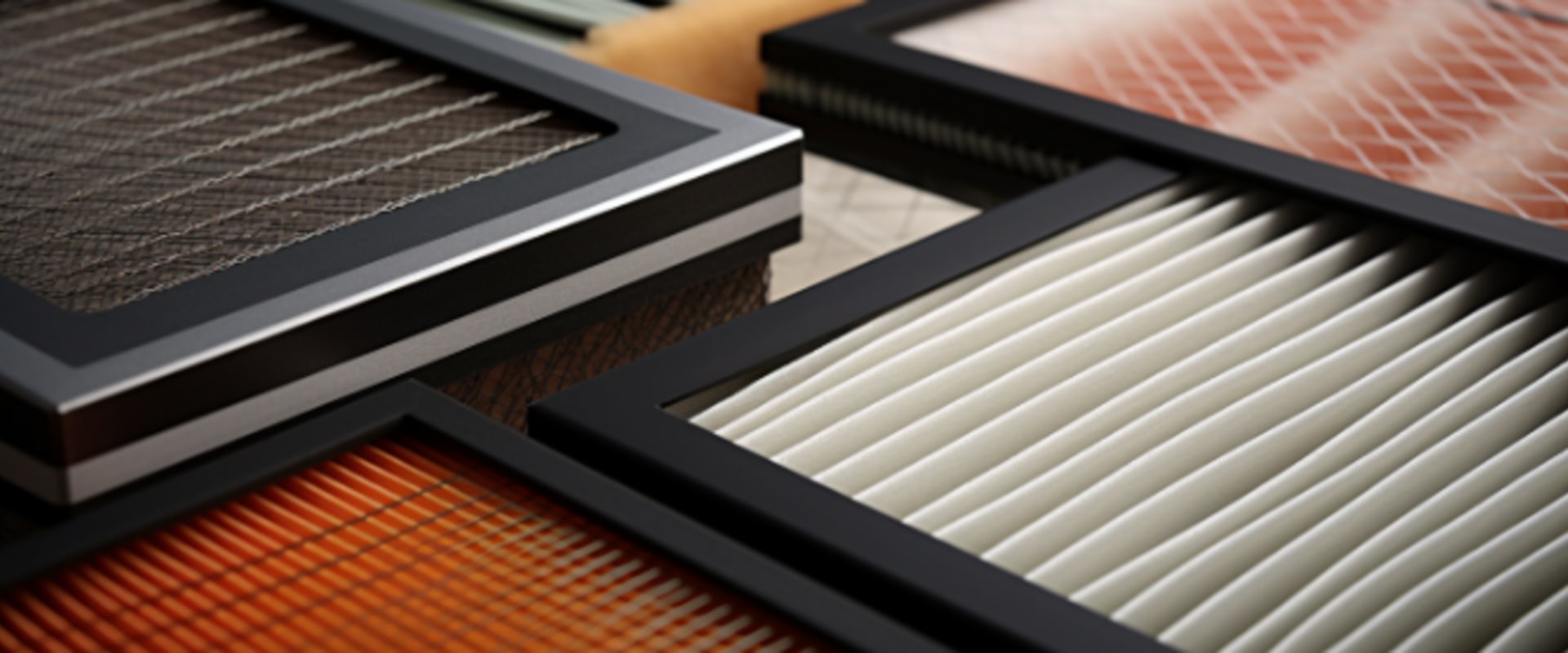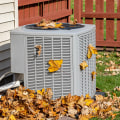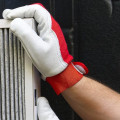How Often Should You Change Your Furnace Filter?
This investigates the frequency of how often you should change your furnace filter, considering factors such as the type of filter utilized, household members' allergies and respiratory health, air quality in the locality, heating and cooling patterns, manufacturer guidelines, and visual assessment of the filter. By examining these aspects comprehensively, this study aims to provide evidence-based recommendations for establishing an effective maintenance schedule for furnace filters.
Type of Filter Used
The frequency of changing furnace filters varies depending on the type of filter used, with disposable fiberglass filters typically requiring replacement every 1-3 months. Filter efficiency plays a significant role in determining how often a filter should be changed. Filters with higher efficiency usually last longer and provide better air quality by capturing smaller particles. On the other hand, lower-efficiency filters may need more frequent replacements to maintain optimal performance.
Replacement cost is another factor to consider when deciding on the type of filter for your furnace. Disposable fiberglass filters are generally more affordable upfront but may need more frequent replacements compared to higher-quality pleated filters or electrostatic filters. While these higher-quality options might have a higher initial cost, they can last longer between replacements, potentially reducing long-term expenses.
Household Allergies and Respiratory Health
Household allergies and respiratory health can be significantly impacted by the regular maintenance of air filters in heating systems. Indoor humidity levels play a crucial role in exacerbating these conditions, as high humidity can create an ideal environment for mold growth, while low humidity can lead to irritation of the respiratory tract. Furnace filters serve as a barrier against airborne particles that may trigger allergies or worsen respiratory issues. Pet dander, a common indoor allergen, can accumulate in heating systems and circulate throughout the house if not captured by filters.
Regularly changing furnace filters is essential to prevent the buildup of allergens like pet dander and maintain indoor air quality. Filters that are clogged with debris are less effective at trapping contaminants, leading to increased exposure to potential allergens. By ensuring proper filtration, households can reduce the risk of allergic reactions and respiratory problems associated with poor indoor air quality. Proper filter maintenance is integral in creating a healthy living environment for individuals sensitive to allergens and pollutants commonly found indoors.
Number of Household Members
Population size within a residence may influence the frequency at which filters need replacing to maintain optimal air quality. Family size and occupant count play a crucial role in determining the lifespan of filters and the replacement frequency. Larger families or households with more occupants tend to generate higher levels of indoor air pollutants, such as dust, pet dander, and pollen. As a result, the filters in HVAC systems tend to accumulate contaminants quicker in these settings compared to smaller households or residences with fewer occupants.
The higher the occupant count, the more frequently filters may need replacement to ensure efficient functioning of the HVAC system and prevent a decline in indoor air quality. It is recommended for larger families or households with several members to check their filters regularly and adhere to manufacturer guidelines regarding replacement intervals. By doing so, optimal air quality can be maintained, reducing potential health risks associated with poor indoor air quality due to clogged or dirty filters.
Air Quality in Your Area
The comparison between urban and rural environments about pollen and pollution levels is a critical aspect of assessing air quality. Urban areas tend to have higher pollution levels due to increased industrial activities and traffic, which can exacerbate respiratory issues. Rural areas might experience higher pollen counts from vegetation, impacting individuals with allergies differently than in urban settings.
Urban vs. Rural Environments
Comparison of air quality in urban and rural environments can provide valuable insights into the potential differences in particulate matter accumulation inside homes. Urban areas tend to have higher levels of noise pollution due to traffic, construction, and other human activities compared to rural areas, which can impact indoor air quality. Outdoor activities such as farming practices or industrial operations prevalent in rural regions may introduce specific pollutants into the air that can infiltrate homes. Understanding these distinctions is crucial for individuals looking to mitigate indoor air pollution effectively based on their location. By recognizing the unique challenges posed by urban and rural environments, homeowners can tailor their strategies for maintaining clean indoor air quality accordingly.
Pollen and Pollution Levels
Analysis of pollen and pollution levels reveals the intricate interplay between natural allergens and anthropogenic contaminants in both urban and rural settings. Seasonal changes significantly impact the concentration of pollen in the air, acting as potent allergy triggers for susceptible individuals. Indoor air quality is crucial, especially considering that people spend a substantial amount of time indoors. Maintaining high filter efficiency in HVAC systems is essential to reduce the entry of pollen particles and pollutants into indoor spaces. Understanding the dynamics of pollen dispersal and pollution sources aids in developing strategies to mitigate allergic reactions and minimize exposure to harmful substances. Proper filtration systems play a pivotal role in enhancing indoor air quality and safeguarding individuals from potential health hazards associated with airborne allergens and pollutants.
Heating and Cooling Usage
Heating and cooling usage can vary depending on factors such as climate, household size, insulation levels, and personal preferences. Energy efficiency plays a crucial role in determining the overall heating and cooling costs of a household. Proper thermostat settings are essential to optimize energy usage and maintain comfort levels. Seasonal maintenance is key to ensuring that HVAC systems operate efficiently. Regular inspection of ductwork can help identify any leaks or blockages that may impede the system's performance.
Efficient energy use not only reduces utility bills but also lessens the environmental impact associated with excessive heating and cooling consumption. Adjusting thermostat settings based on occupancy patterns and preferred temperatures can result in significant energy savings over time. Scheduling routine maintenance, including ductwork inspections, can prevent costly repairs and prolong the lifespan of HVAC systems. By implementing these practices, households can achieve optimal comfort while minimizing energy waste.
Visual Inspection of the Filter
In assessing the visual aspects of furnace filters, signs of dirt and debris accumulation are crucial indicators of potential airflow obstructions. These accumulations can hinder the filter's efficiency in capturing airborne particles, leading to decreased air quality within indoor environments. Additionally, the presence of mold or moisture on filters may signify underlying issues such as high humidity levels or water leaks that could impact both the filter's performance and indoor air quality.
Signs of Dirt and Debris
Excessive dust accumulation on the furnace filter, visible dirt particles, or debris can indicate a need for filter replacement. Maintaining filter efficiency is crucial in reducing the concentration of indoor air pollutants. When filters become clogged with dirt and debris, their ability to trap airborne particles diminishes, allowing contaminants like pollen, pet dander, and dust mites to circulate freely in the air. This compromised filter performance not only leads to decreased indoor air quality but also puts additional strain on the HVAC system as it works harder to maintain airflow. Regularly inspecting for signs of dirt and debris on the furnace filter is essential in ensuring optimal filter function and minimizing exposure to harmful indoor pollutants.
Mold and Moisture
Observing visible signs of mold growth or moisture accumulation in the HVAC system can indicate potential indoor air quality issues. Mold prevention and controlling indoor humidity levels are crucial aspects of maintaining a healthy indoor environment. Proper moisture control is essential to prevent mold growth, as mold thrives in damp conditions. Additionally, ensuring filter effectiveness in the HVAC system plays a significant role in managing moisture levels and preventing mold proliferation. Regularly changing the furnace filter can help maintain proper airflow, reduce excess moisture, and improve indoor air quality by trapping mold spores and other contaminants. By addressing these factors diligently, individuals can create a healthier indoor environment and minimize potential health risks associated with poor air quality.
Establishing a Maintenance Schedule
Establishing a maintenance schedule for changing furnace filters involves considering factors such as the type of filter used, the level of pollutants in the environment, and the manufacturer's recommendations. Filter lifespan is a crucial aspect to contemplate when determining maintenance frequency. Different types of filters have varying lifespans that can range from one to six months or even up to a year. Factors like the material composition and efficiency of the filter influence its longevity. In environments with high levels of dust, pet dander, or other airborne particles, filters tend to accumulate debris faster, necessitating more frequent replacements. Additionally, following the manufacturer's guidelines on maintenance frequency is essential for optimal performance and energy efficiency of the heating system. Neglecting timely filter changes can lead to reduced air quality indoors, increased energy consumption due to restricted airflow, and potential damage to the HVAC equipment over time. Therefore, adherence to a well-planned maintenance schedule is key in ensuring effective filtration and prolonging the life of both the filter and the furnace system.
Frequently Asked Questions
Can using a higher MERV-rated filter improve indoor air quality even if it means changing it more frequently?
Using a higher MERV-rated filter can improve indoor air quality by capturing more particles, but it may require more frequent replacement. The effectiveness of the filter in removing contaminants is directly related to its MERV rating.
Are there any benefits to using a washable or reusable filter instead of disposable ones?
When considering filter longevity, washable filters offer the benefit of being reusable, potentially reducing long-term costs compared to disposable filters. However, initial investment and maintenance requirements should be weighed against these advantages.
How can I tell if my furnace filter needs to be changed sooner than the recommended time frame?
Signs of an early replacement for a furnace filter include reduced efficiency due to a dirty filter. Monitoring airflow, checking for excessive dust accumulation, and observing decreased heating or cooling performance can indicate the need for prompt replacement.
Should I consider using a HEPA filter in my furnace if I have severe allergies or respiratory issues?
When considering filter longevity and cost comparison between HEPA and standard filters for severe allergies or respiratory issues, HEPA filters may be more effective but come at a higher cost compared to disposable filters.
Are there any DIY maintenance tasks I can perform on my furnace filter to extend its lifespan?
To extend the lifespan of a furnace filter, one can perform DIY maintenance tasks such as regular cleaning using a vacuum or washing with water. This method can improve longevity and cost-effectiveness compared to frequent filter replacements.
Here is the nearest branch location serving the Coral Springs FL area…
Filterbuy HVAC Solutions - Pompano Beach
2521 NE 4th Ave, Pompano Beach, FL 33064, United States
(754) 484-4453
https://maps.app.goo.gl/1GJqRrAiAeeQ5S4i8
Here are driving directions to the nearest branch location serving Coral Springs…



